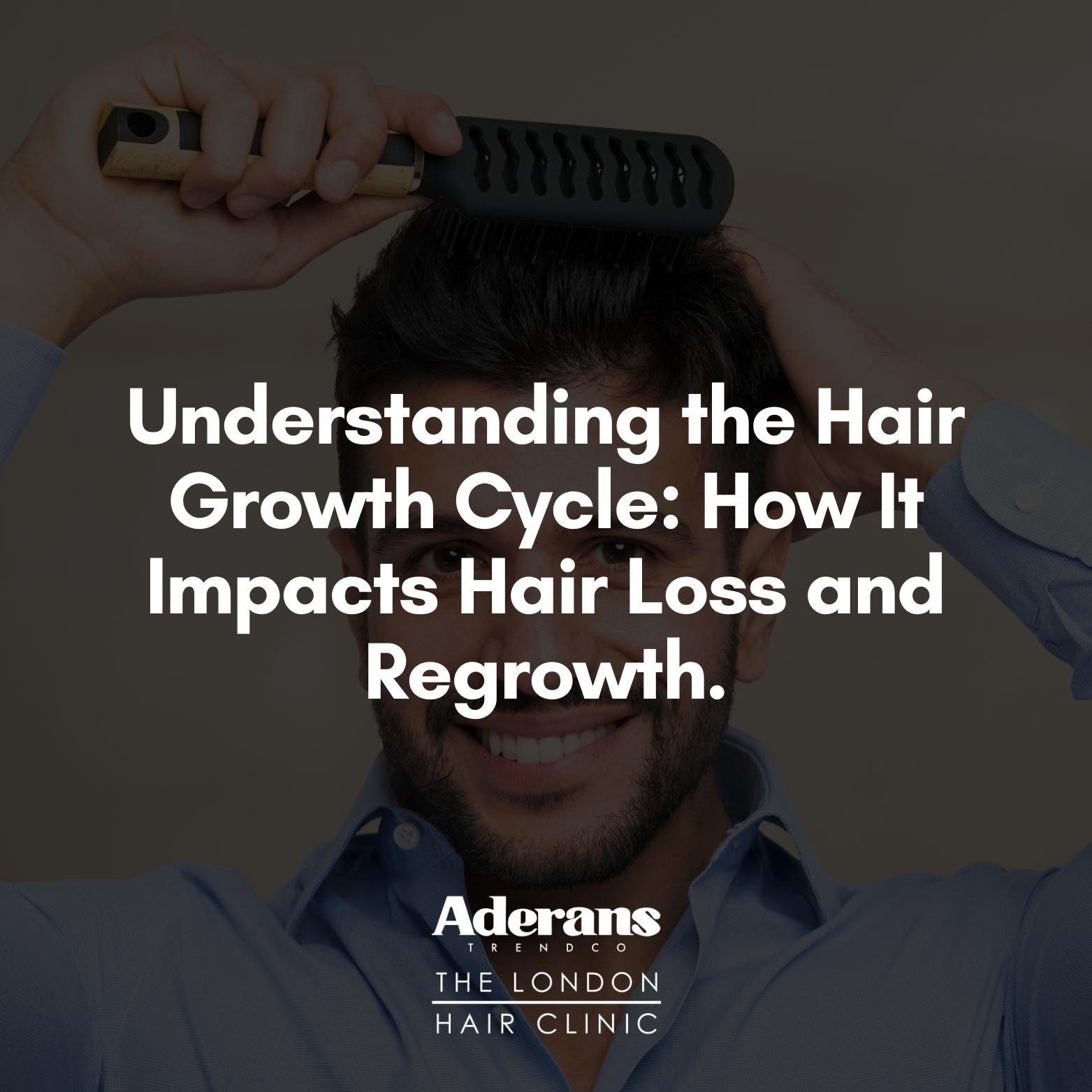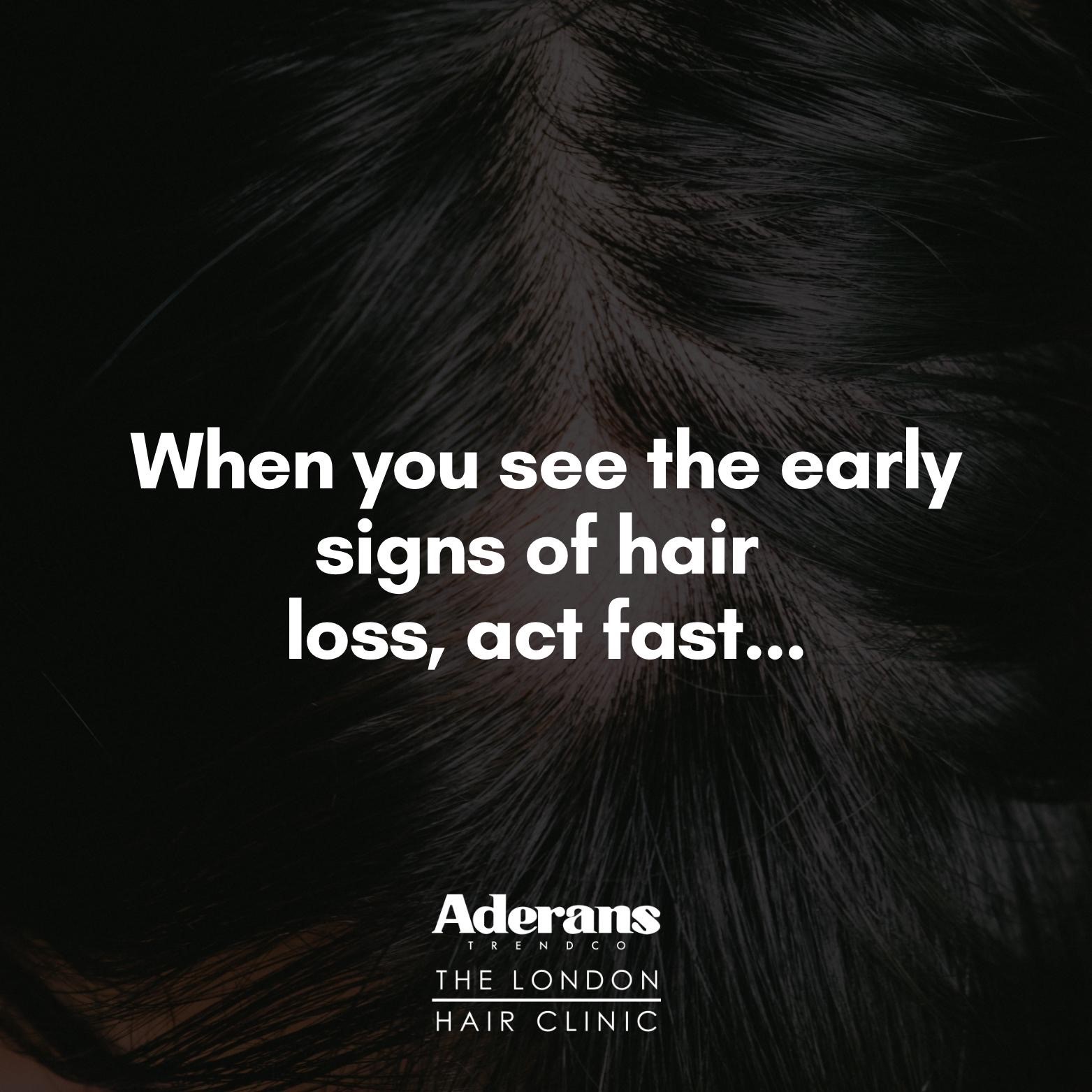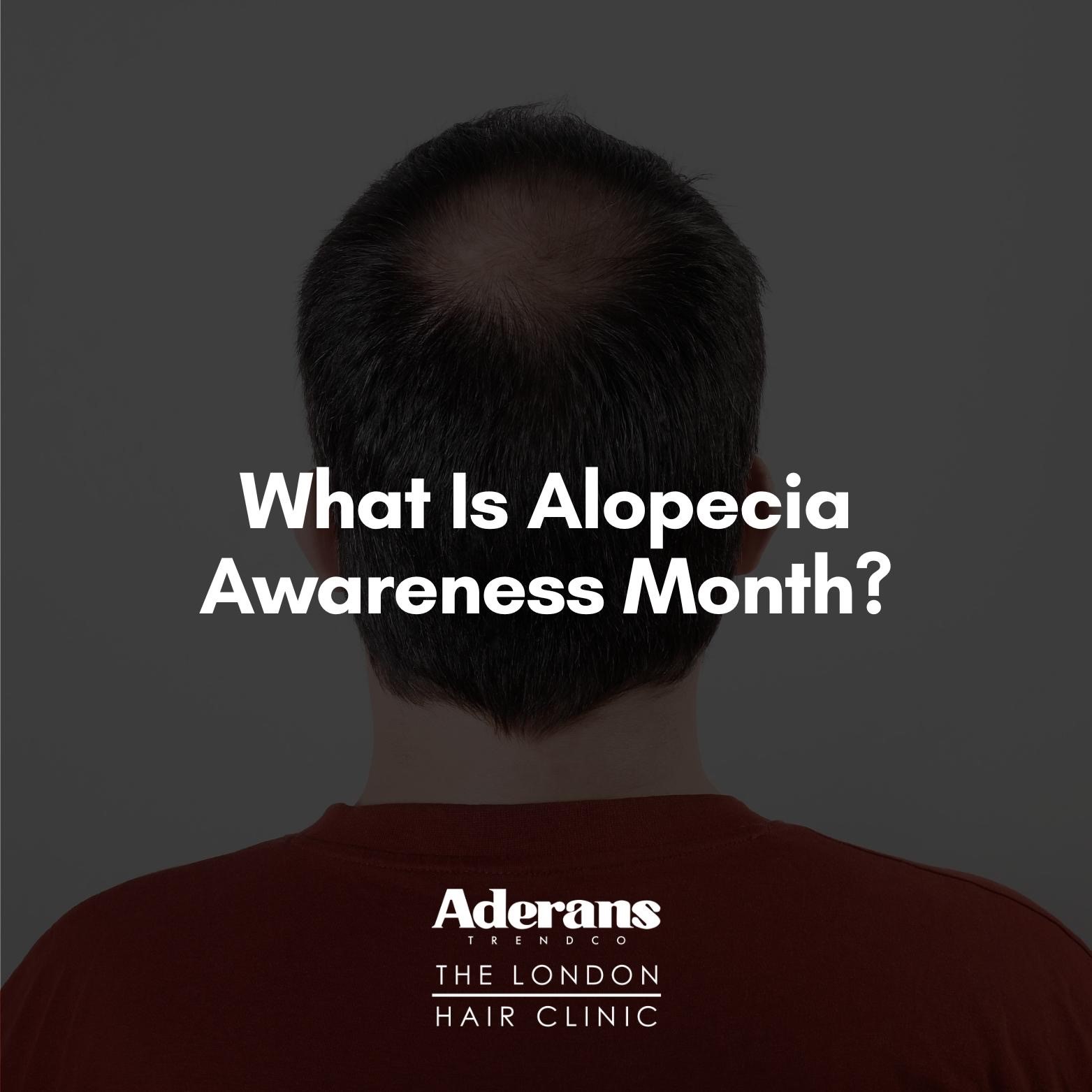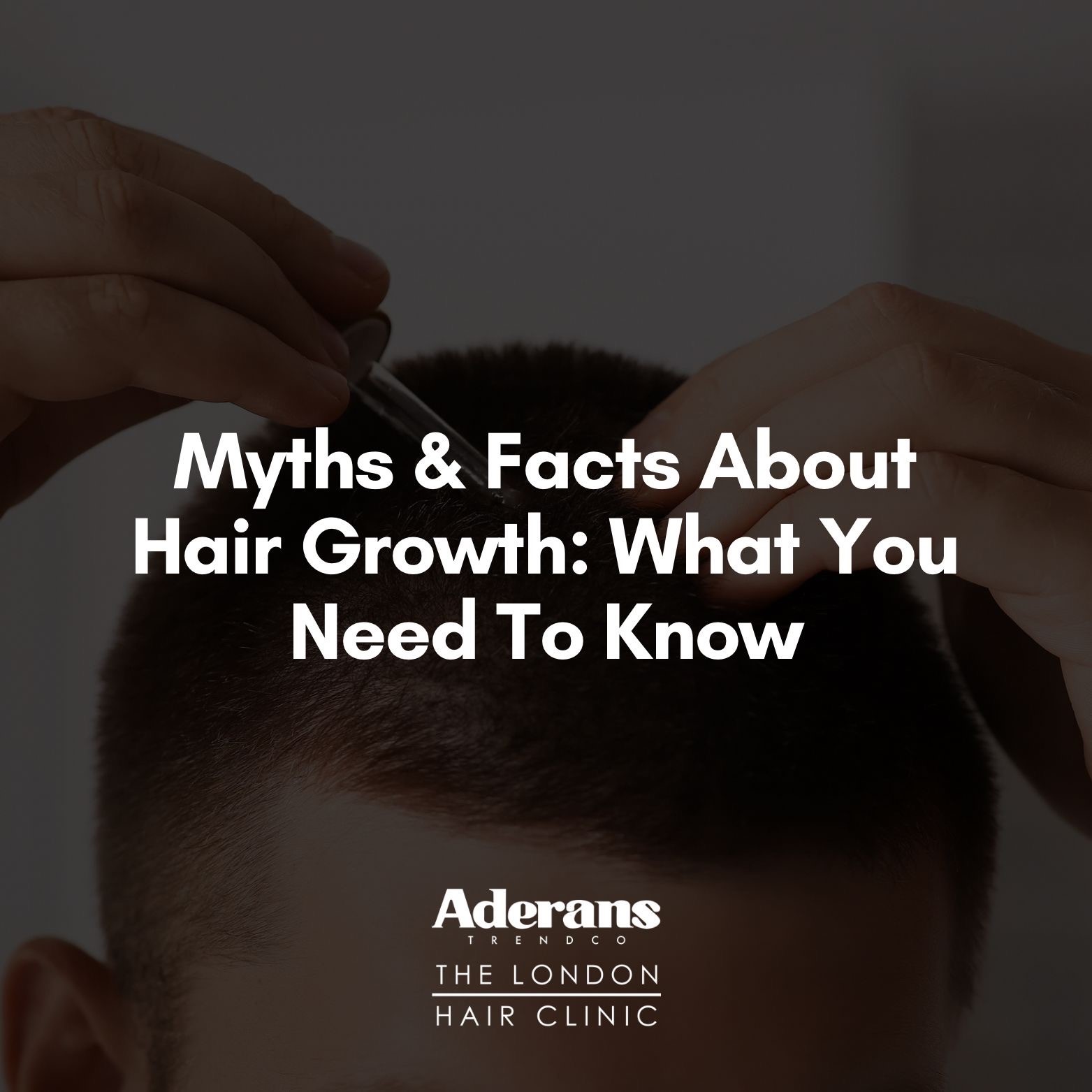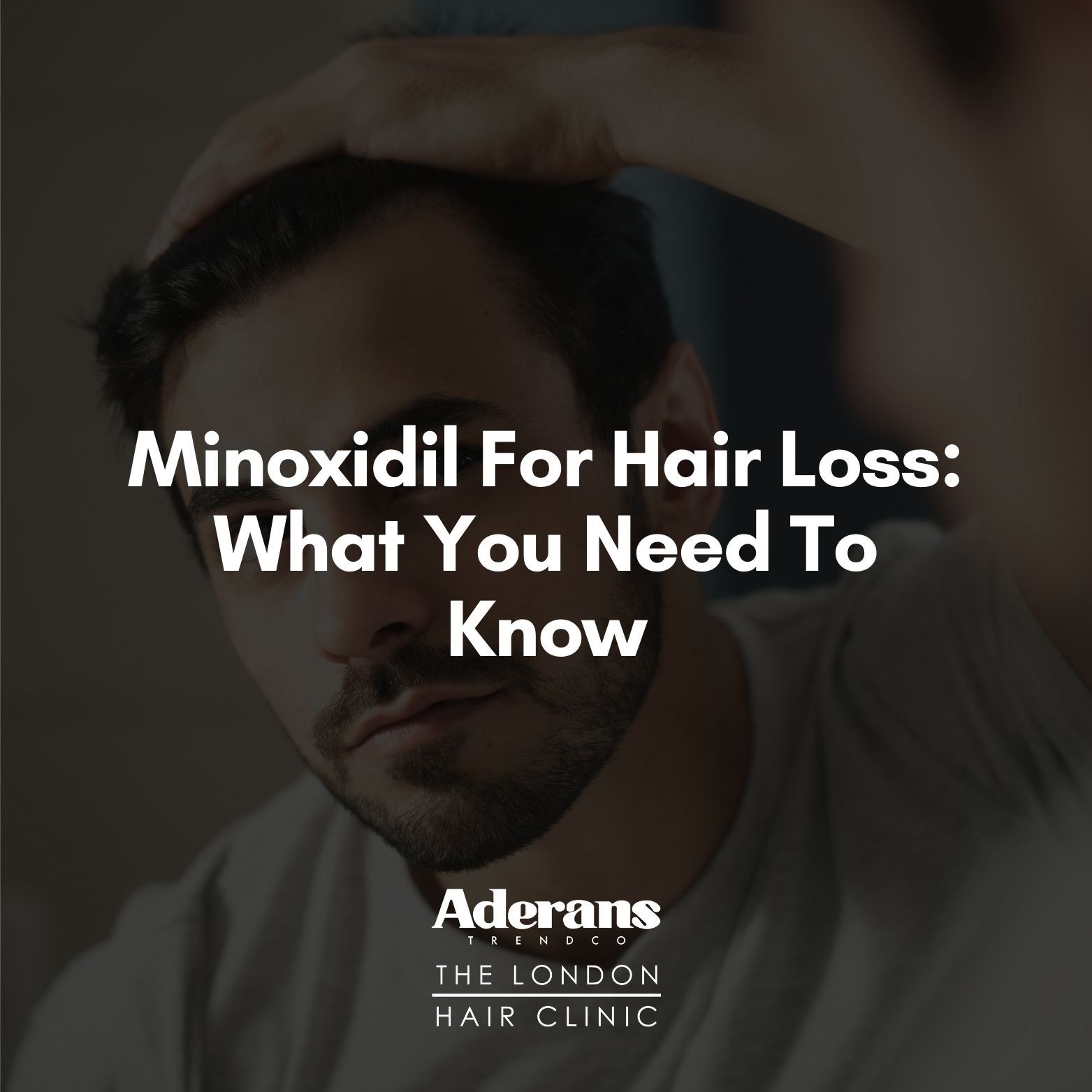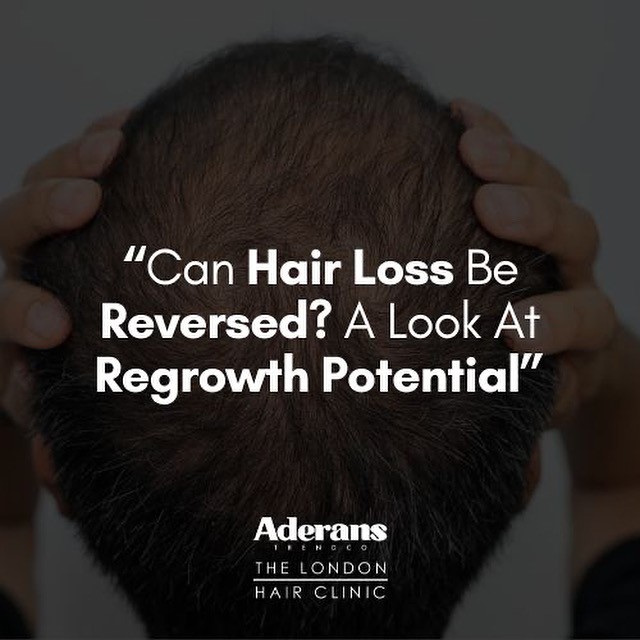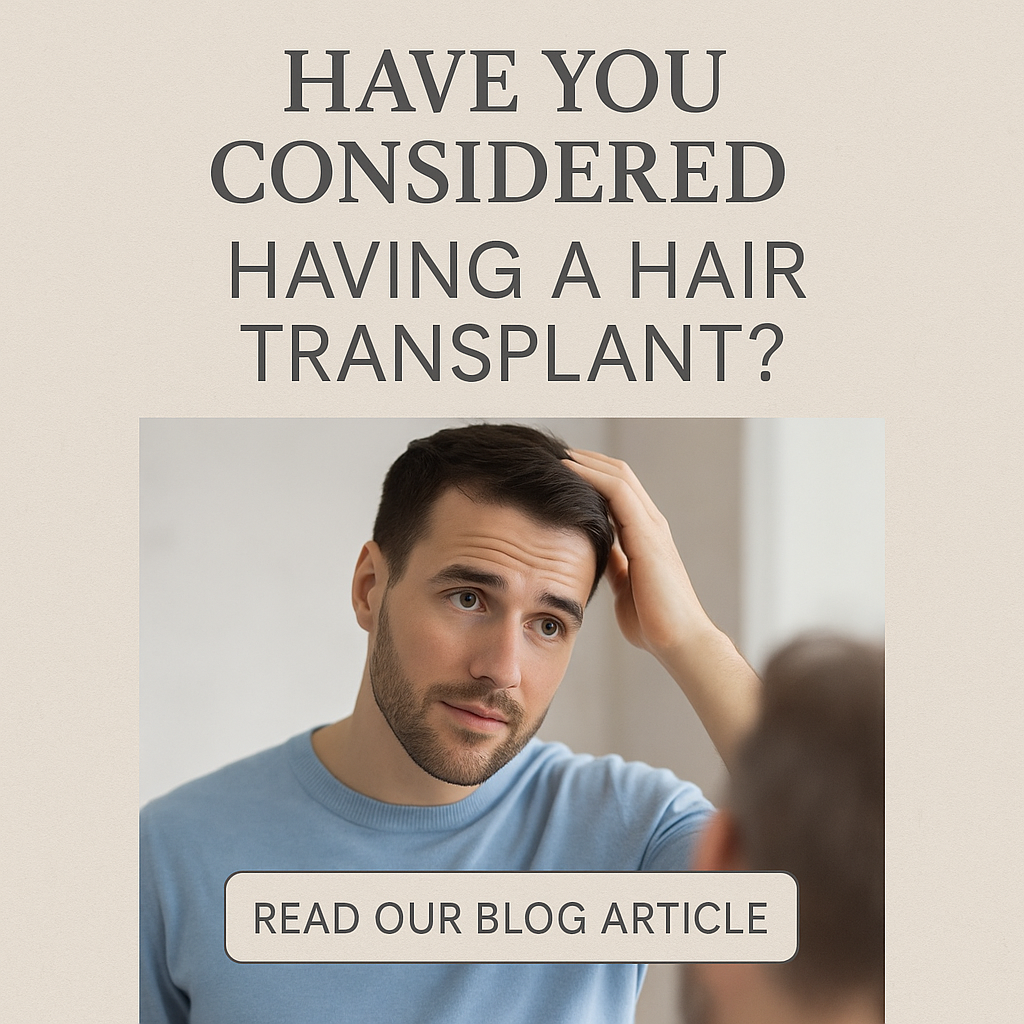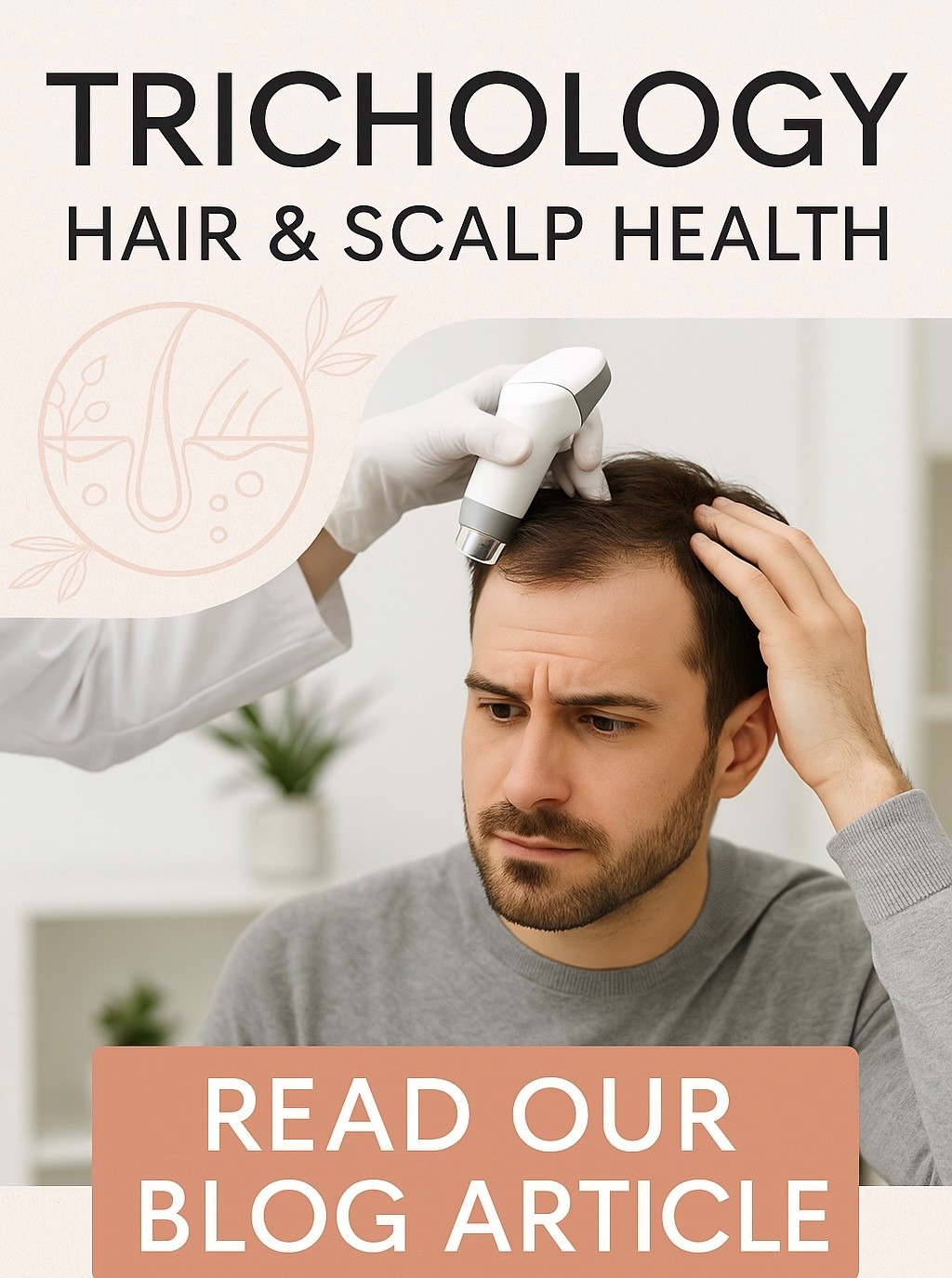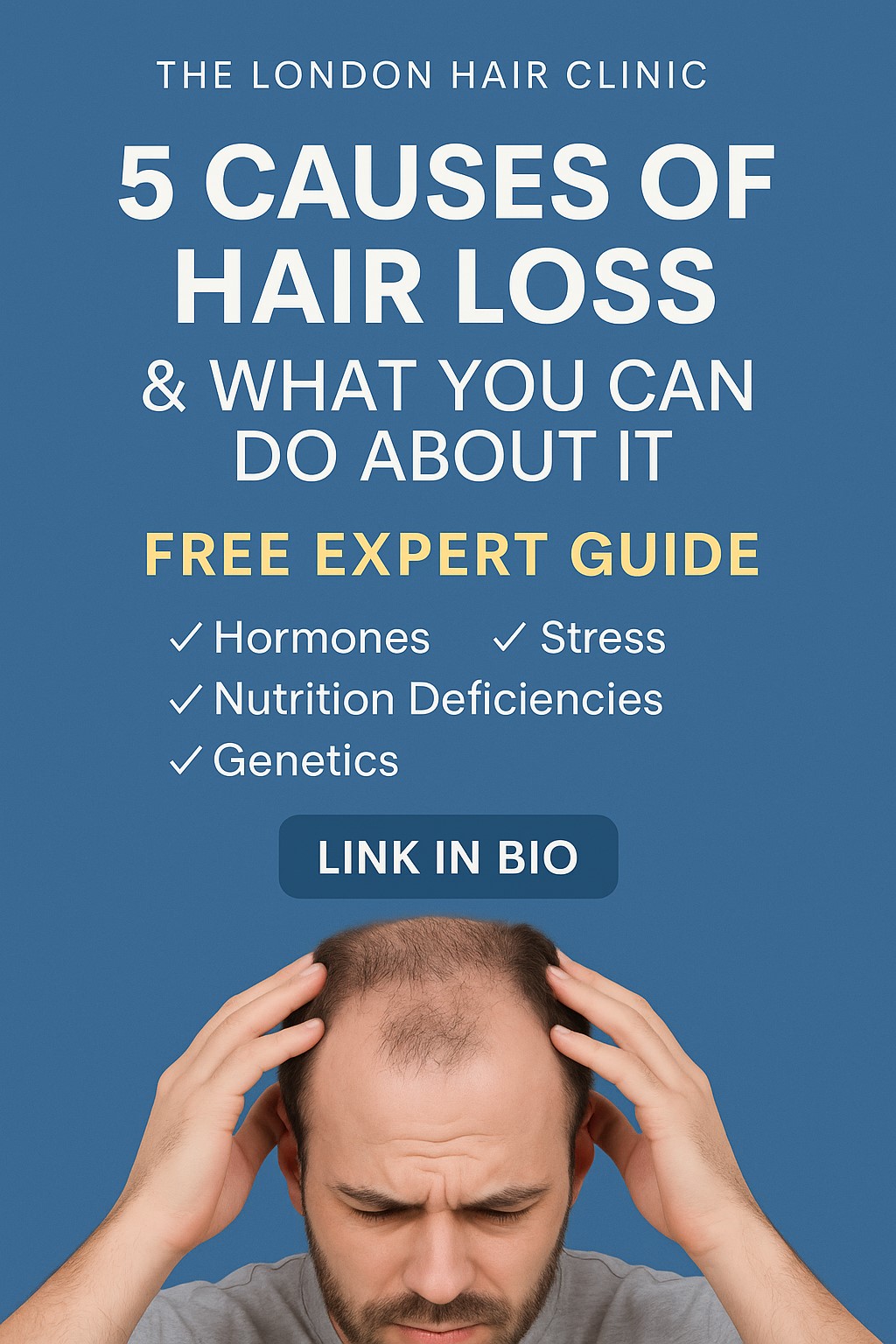Understanding the Hair Growth Cycle: How It Impacts Hair Loss and Regrowth
Understanding the Hair Growth Cycle: How It Impacts Hair Loss and Regrowth
When you look in the mirror each day, it’s hard to notice the small changes happening in your hair. But behind the scenes, your hair is constantly moving through a fascinating process known as the hair growth cycle. There are four distinct phases that your hair goes through as it grows. Understanding these stages can help you keep your hair healthy and manage hair loss effectively.
The Four Stages of Hair Growth
The four stages of hair growth are the anagen phase, catagen phase, telogen phase, and exogen phase. While most of your hair follows a similar pattern, not every strand is in the same phase at the same time. Knowing what happens during each stage helps you make informed decisions about maintaining your hair and scalp health.
- Anagen Phase: The Active Growth Stage
This is the main growth phase — the “workhorse” of the hair cycle. It lasts between two to seven years, during which hair follicles continuously produce new hair, nourished by a strong blood supply. About 85–90% of your scalp hairs are in this stage at any given time. Genetics and hormone levels determine how long your hair can grow. Supporting this phase with proper care and nutrition is key to maintaining healthy hair growth.
- Catagen Phase: The Transitional Period
The catagen phase lasts around two weeks and marks the end of active growth. During this time, hair detaches from its nutrient supply, and the follicle begins to shrink. This short, natural transition is essential for resetting the growth process.
- Telogen Phase: The Resting Stage
In the telogen phase, hair takes a break from growing. This resting stage lasts about three to four months, with roughly 10–15% of your hairs in this phase at any given time. Factors such as poor scalp health or stress can extend the telogen phase, so if your hair feels stagnant or shedding seems prolonged, it’s best to consult a hair loss specialist.
- Exogen Phase: The Shedding Stage
Shedding hair is a normal part of the cycle. During the exogen phase, old hairs are released to make way for new growth. It’s typical to lose between 50–100 hairs a day. However, excessive shedding could signal an imbalance or issue within your hair growth cycle. Hair specialists at Aderans The London Hair Clinic can provide personalized solutions to address your specific needs during this stage and beyond.
Factors That Affect the Hair Growth Cycle
Several factors can influence how your hair grows and renews itself. Here are some key ones:
Hormonal Changes
Hormones have a major impact on hair follicle function. Shifts in hormone levels — during pregnancy, menopause, or due to thyroid disorders — can disrupt the cycle. For example, conditions such as Hashimoto’s disease can contribute to thinning hair. If you notice unexpected changes in your hair, it’s wise to consult a healthcare professional to assess your hormone levels.
Nutritional Influences
Your hair needs essential nutrients like biotin, iron, and protein to grow strong and healthy. When your diet lacks these nutrients, follicles may weaken or become stuck in the resting phase. A balanced diet rich in vitamins, proteins, and healthy fats supports steady, vibrant hair growth.
Scalp Health
Healthy hair starts with a healthy scalp. Conditions such as dandruff, excessive oil, or inflammation can affect blood flow and limit follicle function. Treat your scalp like your skin — cleanse, exfoliate, and moisturize regularly to encourage circulation and promote growth.
Supporting your hair growth cycle means maintaining balance across these factors — hormones, nutrition, and scalp care — to create the ideal environment for healthy hair.
The Impact of Disruptions in the Hair Growth Cycle
The hair growth cycle is delicate, and even minor disruptions can cause noticeable changes. The good news is that improving your hair care habits can help restore balance and encourage regrowth.
Causes of Hair Loss
Many internal and external factors can interfere with hair growth. Hormonal imbalances, especially elevated levels of dihydrotestosterone (DHT), can shrink hair follicles — a process known as miniaturization. Nutritional deficiencies, stress, certain medications, and scalp inflammation (from conditions such as dandruff or psoriasis) can also disrupt the natural cycle.
Common Hair Loss Conditions
- Androgenetic Alopecia (Male or Female Pattern Baldness):Caused by genetic sensitivity to DHT.
- Telogen Effluvium: Triggered by stress, illness, or hormonal changes, leading to excessive shedding.
- Alopecia Areata: An autoimmune condition where the body mistakenly attacks hair follicles, causing patchy hair loss.
While these conditions differ, most are manageable with the right diagnosis and treatment plan.
Maintaining Hair Health Throughout the Growth Cycle
Healthy hair care isn’t just about what you do during the growth stage — it’s about consistency across all phases. By adopting smart, proactive habits, you can help your hair thrive.
Effective Hair Care Practices
- Wash regularly to prevent oil build-up and keep follicles clear.
- Use gentle, sulphate-free shampoos that preserve natural oils.
- Massage your scalp to stimulate blood flow and encourage growth.
- Avoid harsh styling, excessive heat, and tight hairstyles.
- Stay hydrated — both by drinking water and using moisturizing products.
Proactive Steps for Regrowth
If you’re noticing hair thinning or loss, early action can make a big difference. Supplements containing biotin, zinc, and essential vitamins may help strengthen hair. Treatments such as low-level laser therapy can also stimulate follicle activity.
At Aderans The London Hair Clinic, we offer tailored hair restoration and regrowth solutions for every stage of hair loss. Whether you want to prevent future loss or boost your anagen phase, our experts can design a personalized plan for you.
FAQs
How can I tell if inflammation is causing my hair loss?
Scalp inflammation can interfere with the hair growth cycle and lead to shedding. A hair loss expert can perform a detailed scalp analysis to identify inflammation and recommend treatments to stop further loss and restore balance.
Why do I have so much new hair growth on my head?
This is usually a positive sign that your hair is re-entering the anagen (growth) phase after resting in the telogen phase. It’s common to see this after recovering from stress, illness, or hormonal changes.
Does hair grow back after falling out from the roots?
Hair can often grow back if the follicle remains healthy. However, if hair loss results from permanent conditions such as scarring alopecia or severe follicle damage, regrowth may be limited. A consultation with a hair loss expert can help determine the cause and explore the best treatment options.
Book your FREE consultation today with Aderans The London Hair Clinic.
When you see these early signs of hair loss, act quickly
When you see these early signs of hair loss, act quickly
Do you think your hair is getting thinner? Does it seem like there are more hairs circling the shower drain or tangled in your brush than there used to be? So many of us have a “feeling” our hair is thinning, but because hair loss is such an emotional topic, we tend to ignore the signs of hair loss and find ways to hide the thinning. The truth is that if you think your hair is thinning, it probably is.
Millions of people are dealing with hair loss every day, so you are not alone. As we age, our hair growth rate slows, which is a natural condition called involutional alopecia. In addition, there are genetic factors that cause male and female pattern baldness, also known as androgenetic alopecia. This common condition can start as early as your late teens and twenties—and it’s progressive. Without intervention, your hair loss will worsen over time.
If you see any of these early signs of hair loss, it’s time to act. The sooner you do, the more solution options you may have.
Widening Part
A widening of your part is often the first sign of hair loss, especially for women. When your hair is thinning, you may notice more scalp showing around your part.
Excess Shedding
The average person sheds 50 to 100 individual hairs per day. If you are shedding more than 100 hairs a day, your hair may be starting to thin out. Keep in mind, if you don’t wash your hair every day, you may see more shedding on the days you shampoo versus the days you don’t. But, if you’re noticing more and more hair in your drain, on your brush or pillow, you may be starting to lose your hair.
Receding at the Hairline and Temples
Men may first notice recession at their hairline, while women may see it around their temples. The hair around your hairline or temples may also be shorter and wispier where the thinning is occurring. This is called hair miniaturisation. Generally, when a hair follicle starts to become inactive, the hair it produces becomes thinner and shorter until eventually the follicle stops producing new hair.
The Ponytail Test
Do you need to wrap the rubber band around your hair an extra time to hold your ponytail in place? For women, and for those men who love the man bun, if you see the circumference of your hair decrease when pulled back into a ponytail, your hair probably is thinning.
Discover How Aderans The London Hair Clinic Can Help
What should you do if you’re noticing one or more of these early signs of hair loss? Talk to your doctor to ensure there isn’t an underlying medical condition causing your thinning. Then, schedule your free hair loss analysis with one of our hair loss experts. Don’t wait. You don’t have to accept hair loss and the earlier you act, the more options you may have.
Book a FREE consultation today to learn more about our proven solutions that will help you love your hair again!
What is Alopecia Awareness Month?
What is Alopecia Awareness Month?
September marks Alopecia Awareness Month — an important time to highlight this common yet often misunderstood hair loss condition. If you or someone you know is noticing circular patches of hair loss on the scalp, alopecia could be the cause. Unlike typical male- or female-pattern baldness, alopecia may be linked to other health conditions.
In fact, more than 100,000 people in the UK are currently living with Alopecia Areata. By shining a spotlight on what alopecia is, who it affects, and the treatments available, we can help reduce stigma and dispel the misconceptions surrounding it.
What is Alopecia?
Alopecia areata, often shortened to alopecia, is an autoimmune condition that causes hair loss. While some people may inherit it, this is not always the case.
Causes
Alopecia occurs when the immune system mistakenly attacks healthy hair follicles, causing the affected follicles to shed their hair. This can result in small, coin-sized bald patches on the scalp, or in more severe cases, widespread hair loss across the body.
Symptoms may include:
- Sudden bald patches on the scalp or beard
- Small patches merging into larger bald areas
- Cycles of hair loss and regrowth
- Flare-ups that worsen over time
- In some cases, nail changes such as ridges or pitting
- Rarely, complete loss of scalp, body, eyebrow, and eyelash hair
Why is Alopecia Awareness Important?
Recognising the signs of alopecia early allows people to seek proper care and support. By raising awareness, we can:
- Improve understanding of the condition
- Normalise hair loss beyond male-pattern baldness
- Promote targeted solutions for those affected
- Encourage further research into treatments
Types of Alopecia
Alopecia doesn’t affect everyone in the same way. Some of the most recognised subtypes include:
- Alopecia totalis – complete scalp hair loss
- Alopecia universalis – total body hair loss
- Alopecia barbae – patchy beard hair loss
- Alopecia ophiasis – band-like hair loss around the scalp
Other forms include traction alopecia, caused by tight hairstyles, and telogen effluvium, where temporary hair shedding occurs due to stress or hormonal changes.
Who Does Alopecia Affect?
Alopecia can affect anyone — regardless of age, gender, or ethnicity. However, women and people of colour may be slightly more susceptible. Symptoms often begin before middle age, and in some cases, there may be a family history of the condition. Alopecia is also linked to other autoimmune conditions such as type 1 diabetes, lupus, and vitiligo.
Can Alopecia Be Cured?
Currently, there is no permanent cure for alopecia. Symptoms may come and go, sometimes improving with lifestyle changes or treatment. While some people embrace hair loss, others seek ways to restore their hair and confidence.
It’s important to be cautious of “miracle cures” found online. Instead, speaking with a trusted hair restoration specialist can help you find safe, evidence-based solutions tailored to your needs.
What Hair Loss Solutions Work for Alopecia?
Hair Systems
For those with alopecia, hair systems offer an immediate, non-surgical solution. Unlike traditional wigs, modern systems are custom-made to blend naturally with your hairline and skin tone. Lightweight, breathable, and secure, they allow you to live life with confidence — whether at work, exercising, or socialising.
Hair Therapy Program
Low-level laser treatments, alongside topical FDA-approved medication, can help stimulate growth and improve scalp health, supporting long-term hair quality.
Micropigmentation (SMP)
This non-surgical technique uses precise pigmentation to replicate hair follicles, creating the look of a fuller hairline or thicker density.
Hair Transplant
For those with complete hair loss and minimal regrowth potential, transplants such as Follicular Unit Extraction (FUE) provide a long-term, natural-looking result.
Spreading Alopecia Awareness
Raising awareness helps to normalise different forms of hair loss and reminds us that this condition affects people from all walks of life. With more open conversations, we can reduce stigma and improve access to effective treatments.
Book Your Consultation Today
If you’re struggling with alopecia or other forms of hair loss, you don’t have to face it alone. Explore safe, proven solutions with the experts at Aderans The London Hair Clinic.
👉 Book your consultation here and take the first step towards restoring your confidence.
Myths and Facts About Hair Growth: What You Need to Know
Myths and Facts About Hair Growth: What You Need to Know
From age-old home remedies to modern hair care products, the world is full of myths about hair growth. But how many of these beliefs stand up to scientific scrutiny?
Many of these common misconceptions could actually cause more harm than good. As a leader in the field of hair restoration, Aderans The London Hair Clinic is committed to providing evidence-based insights into hair growth—so you can make informed decisions about caring for your hair.
Whether you are hoping to restore thinning hair or simply give your locks a healthy boost, here’s what you need to know to separate fact from fiction.
7 Common Myths About Hair Growth
- Cutting Hair Makes It Grow Faster
A regular trim won’t affect how quickly your hair grows. Hair growth begins at the roots, not the ends. Trimming helps to reduce split ends and keep hair looking healthy, but it does not speed up growth.
- Frequent Shampooing Causes Hair Loss
Washing your hair helps to remove dirt, oil, and product build-up. While it’s normal to shed some hairs in the shower, frequent shampooing does not cause permanent hair loss. The key is to use a shampoo suited to your hair type and scalp condition.
- Grey Hair Is Caused by Stress
Although stress can affect overall hair health, it does not directly cause grey hair. Genetics and ageing are the main factors. As pigment production slows, new hairs grow in grey or white.
- Natural Oils Are Always Beneficial
Sebum—the natural oil produced by the scalp—keeps hair hydrated and protected. However, too much oil can clog pores and lead to issues such as dandruff or greasy hair. Balance is essential.
- Expensive Products Guarantee Better Results
Price doesn’t always equal performance. The most important factor is the ingredients. Shampoos and conditioners with the right formulation for your hair and scalp will be more effective than relying on high cost alone.
- Wearing Hats Causes Hair Loss
Unless a hat is extremely tight and causes physical damage to the hair, wearing one will not lead to hair loss. Most hair loss is caused by genetics, hormones, or health conditions—not by covering your head.
- Heat Styling Is Always Damaging
Heat can damage hair if used excessively, but with proper precautions—such as applying a heat protectant and using moderate temperatures—styling tools can be used without long-term harm.
Evidence-Based Insights for Hair Growth
When it comes to boosting growth and preventing hair loss, it is vital to rely on science rather than myths.
Factors Influencing Hair Growth
- Genetics play the biggest role in determining hair thickness and growth rate.
- Nutrition is also key. Hair is made primarily of keratin, a protein that requires sufficient protein, vitamins, and minerals to be produced. Foods rich in protein, iron, vitamin D, and biotin support healthy growth.
- Hormones have a major influence. Fluctuations during puberty, pregnancy, or menopause can alter hair growth cycles. The hormone DHT (dihydrotestosterone) is a well-known cause of hereditary hair thinning, leading to follicle miniaturisation.
Proven Treatments for Hair Loss
If you’re concerned about thinning hair, several effective treatments are available:
- Topical Medications: Minoxidil is clinically proven to stimulate growth and strengthen follicles.
- Oral Medications: Options such as finasteride and spironolactone can help by targeting hormone-related causes.
- Non-Surgical Treatments: Advanced therapies, such as PRP (Platelet-Rich Plasma), can stimulate follicle activity.
- Surgical Solutions: Hair transplant procedures such as Follicular Unit Extraction (FUE) and Follicular Unit Transplantation (FUT) offer permanent results using your own hair.
The Journey to Healthy Hair
From miracle shampoos to home remedies, myths about hair growth are everywhere. Understanding the facts allows you to make the right choices for your hair and overall wellbeing.
Everyone’s hair is different, and the best treatment is always tailored to the individual.
Ready to take control of your hair growth journey?
Book a consultation with Aderans | The London Hair Clinic today to explore personalised treatment options designed around your needs.
Minoxidil for Hair Loss: What You Need to Know
Minoxidil for Hair Loss: What You Need to Know
If you’re looking into hair loss treatments, you’ve probably heard of Minoxidil. It’s one of the most trusted topical solutions for thinning hair and has helped millions of men and women slow shedding and regrow fuller hair. But how does it work, and is it right for you?
What is Minoxidil?
Originally developed in the 1960s as a treatment for high blood pressure, Minoxidil was found to cause an unexpected side effect—hair growth. By 1988, the FDA had approved it for male pattern baldness, and in 1992 it was cleared for use in women.
Today, Minoxidil is available over-the-counter in 2% and 5% strengths, as a foam or liquid solution. Applied directly to the scalp, it stimulates the hair follicles, helping slow hair loss and encourage regrowth. Most people notice results within 2 to 4 months when used consistently.
Are There Side Effects?
While most people tolerate Minoxidil well, some may experience mild side effects such as:
- Itchy or irritated scalp
- Skin rash or soreness
- Dizziness or headaches (less common)
Always follow instructions carefully and consult your doctor if you have concerns.
Consistency is Key
Minoxidil requires patience and regular use. Missing applications can slow progress, while consistent use often leads to thicker, stronger hair and reduced shedding.
Minoxidil at Aderans The London Hair Clinic
At Aderans The London Hair Clinic, Minoxidil is a core part of our EXT Extreme Hair Therapy programme. This five-step system combines:
- Minoxidil for proven regrowth support
- Specialised shampoos, conditioners, and supplements
- Personalised scalp treatments at our clinic
- Progress tracking with our hair specialists
This comprehensive approach is designed to prevent further loss and maximise regrowth potential.
Start Your Hair Regrowth Journey Today
With expert guidance, the right treatment plan, and a little patience, Minoxidil can help restore not just your hair, but also your confidence.
Book your consultation today with Aderans The London Hair Clinic to discover if Minoxidil is right for you.
Types of Hair Loss: Which Ones Are Reversible?
Types of Hair Loss: Which Ones Are Reversible?
✅ Reversible Hair Loss Conditions
- Telogen Effluvium
Caused by stress, illness, or hormonal shifts. Hair usually grows back once the trigger is removed.
- Alopecia Areata
An autoimmune condition where hair falls out in patches. It often resolves on its own or with treatment.
- Nutritional Deficiencies
Lack of iron, zinc, protein, or B vitamins can trigger hair loss. Supplementing and improving diet often helps.
- Medication-Induced Hair Loss
Some drugs (e.g., chemotherapy, antidepressants) cause temporary hair loss. Regrowth typically resumes after stopping the medication.
- Postpartum Hair Loss
Common in women after childbirth. Hair usually regrows within 6–12 months.
❌ Less Likely to Be Reversed (But Can Be Managed)
- Androgenetic Alopecia (Male/Female Pattern Baldness)
The most common type of hair loss, driven by genetics and hormones. It’s not “reversible” in the traditional sense, but it can be slowed or managedwith the right treatment.
- Scarring Alopecia
Caused by inflammation that destroys hair follicles. Hair doesn’t regrow in these areas.
Treatments That Support Hair Regrowth
Depending on the type and stage of hair loss, there are several treatment options that can support regrowth:
- Topical Treatments
- Minoxidil (Rogaine)
FDA-approved and available over-the-counter. Works best for early-stage hair thinning.
- Oral Medications
- Finasteride (Propecia)
A prescription drug for men that helps slow hair loss and promote regrowth by blocking DHT.
- Platelet-Rich Plasma (PRP) Therapy
- Involves injecting your own platelets into the scalp to stimulate follicles and promote growth.
- Low-Level Laser Therapy (LLLT)
- A non-invasive option using red light to stimulate hair follicles.
- Microneedling
- Helps stimulate collagen and growth factors, especially when combined with topical treatments.
- Hair Transplant Surgery
- Effective for restoring lost hair in advanced cases of permanent hair loss.
When to Seek Professional Help
If you’re noticing consistent shedding, visible thinning, or a receding hairline, it’s best to act early. Hair follicles that have been dormant for too long may no longer be viable. A trichologist or hair loss specialist can evaluate your scalp, perform tests, and create a personalized treatment plan.
Final Thoughts: Is Hair Loss Reversible?
Some types of hair loss can absolutely be reversed—especially when caught early and treated appropriately. Others may be more about slowing progression or restoring lost density through medical or cosmetic solutions.
The key takeaway? Don’t wait. The sooner you take action, the better your chances of regrowth.
👨⚕️ Considering Treatment?
If you’re worried about hair loss or looking for expert advice, don’t wait. The earlier you take action, the better your chances of successful regrowth.
👉 Book a consultation today with our hair loss specialists at The London Hair Clinic. We’ll help you uncover the cause of your hair loss and guide you toward real, lasting
Emma Furlong Micropigmentation SMP Specialist
Confidence, One Dot at a Time: Emma Furlong on Transforming Lives with Scalp Micropigmentation
When it comes to restoring confidence and redefining self-image, Emma Furlong isn’t just an SMP artist — she’s a game changer.
Recently featured on ITV’s This Morning, Emma brought national attention to the art and science of Scalp Micropigmentation (SMP) — and the powerful impact it can have on those struggling with hair loss. With a steady hand and an empathetic heart, Emma’s work is transforming not just hairlines, but lives.
“People think SMP is just cosmetic — but it’s so much more. It’s about feeling like yourself again,” Emma shared during her ITV appearance.
Why Choose SMP?
SMP is a non-surgical solution that uses advanced pigment techniques to replicate the appearance of hair follicles. Whether you’re dealing with thinning hair, alopecia, scarring, or complete hair loss, SMP creates the illusion of fuller hair or a natural shaved look — tailored precisely to you.
Emma’s clients consistently highlight her attention to detail, artistic precision, and ability to make them feel at ease during what can be a deeply personal journey.
Featured on National TV — Trusted by Hundreds
Being featured on This Morning was more than just a media moment — it was a validation of Emma’s skill, passion, and impact. Her appearance helped demystify SMP for viewers across the UK, showing just how life-changing this treatment can be.
Whether you’re considering SMP for the first time or have been curious for a while, Emma Furlong at The London Hair Clinic is the expert you want by your side.
Start Your Journey Today
Take the first step towards confidence with an expert who understands hair loss from the inside out.
👉 Click here to learn more and book your consultation
Have you considered having a Hair Transplant
Have You Considered Having a Hair Transplant?
Everything You Need to Know Before Taking the Next Step
Hair loss can have a profound impact on your self-esteem, confidence, and even the way you present yourself to the world. At The London Hair Clinic, we meet people every day who are exploring options to restore their hair and regain their confidence. One of the most effective and permanent solutions is a hair transplant — but is it the right option for you?
In this blog, we’ll walk you through everything you need to know if you’re considering a hair transplant.
What Is a Hair Transplant?
A hair transplant is a minimally invasive surgical procedure that involves moving healthy hair follicles from one area of the scalp (usually the back or sides) to areas where the hair is thinning or balding. The goal is to restore a natural-looking hairline and fill in bald patches.
There are two main types of hair transplant techniques:
- FUT (Follicular Unit Transplantation)
- FUE (Follicular Unit Extraction)
Both techniques are highly effective, but your suitability depends on factors like hair type, extent of hair loss, and your medical history.
Who Is a Good Candidate?
You might be a strong candidate for a hair transplant if:
- You have stable hair loss (typically due to male or female pattern baldness)
- You have enough donor hair on the back or sides of the scalp
- You are in good general health
- You have realistic expectations about results
During a consultation at The London Hair Clinic, our trichologists and surgeons assess your scalp, hair quality, and goals to help determine your eligibility.
What Are the Benefits?
✔️ Permanent results – Unlike topical treatments or medications, hair transplants offer a lasting solution.
✔️ Natural appearance – Skilled surgeons can recreate your natural hairline with precision.
✔️ Low maintenance – Once the transplanted hair grows in, it can be washed, styled, and trimmed like normal hair.
✔️ Improved self-confidence – Many clients report feeling more confident in both personal and professional settings.
What to Expect During and After the Procedure
A typical hair transplant is performed under local anaesthetic and can take several hours, depending on the size of the area being treated. You can expect:
- Consultation and Planning – We design a custom hairline and select donor sites.
- Procedure Day – The grafts are extracted and transplanted with precision.
- Recovery – Most clients return to work within a few days. Shedding is common at first, but new growth begins in 3–4 months, with full results at 9–12 months.
What Does It Cost?
Costs vary based on the technique used and the number of grafts required. At The London Hair Clinic, we offer transparent pricing to make treatment accessible. A fixed price will be agreed after the consultation.
Why Choose The London Hair Clinic?
We are one of the UK’s leading clinics for hair restoration and trichology, offering:
- ✅ Decades of experience
- ✅ Industry-leading specialists
- ✅ Discreet, personalised consultations
- ✅ State-of-the-art techniques and technology
- ✅ Aftercare that supports you every step of the way
Final Thoughts
A hair transplant can be a life-changing decision — one that restores not just your hair but your confidence. If you’re thinking about it, we invite you to book a consultation with our team of experts.
Ready to take the next step? Click here to contact us
The London Hair Clinic — Trusted Experts in Hair Restoration
Reasons to visit a Trichologist
Top Reasons to Visit a Trichologist: What Your Scalp and Hair Are Telling You
Are you noticing more hair on your brush than usual? Does your scalp feel itchy, flaky, or inflamed? These could be signs it’s time to see a trichologist.
A trichologist is a specialist in hair and scalp health. While many people turn to dermatologists or general practitioners for hair concerns, trichologists offer targeted expertise that can make a real difference. Here are the top reasons why visiting a trichologist could be the best decision for your hair—and your confidence.
- Excessive Hair Shedding or Hair Loss
Losing up to 100 hairs a day is normal, but if you’re seeing bald patches, thinning areas, or clumps of hair coming out in the shower, it’s time to get professional help. Trichologists are trained to diagnose the causes of hair loss, including:
- Androgenetic alopecia (male or female pattern hair loss)
- Telogen effluvium (stress- or illness-related shedding)
- Alopecia areata (autoimmune hair loss)
- Postpartum hair loss
- Scalp Issues
An unhealthy scalp can impact hair growth and overall hair health. Trichologists treat a wide range of scalp conditions such as:
- Dandruff
- Seborrheic dermatitis
- Psoriasis
- Folliculitis
- Itchy, flaky, or oily scalp
By addressing scalp health, they create the right environment for stronger, healthier hair to grow.
- Unexplained Hair Texture Changes
Has your hair become dry, brittle, or frizzy out of nowhere? Hair texture changes can be linked to nutritional deficiencies, hormonal shifts, or medical conditions. A trichologist will assess your hair from the root up and suggest both lifestyle changes and treatments that can restore your hair’s natural vitality.
- Support for Hair Growth Treatments
If you’ve tried over-the-counter solutions with little success, a trichologist can recommend more effective, evidence-based treatments. These may include:
- Scalp therapy
- Micro needling
- Low-level laser therapy
- Topical or oral treatments tailored to your specific condition
They also guide you through treatment plans with realistic timelines and expectations.
- Pre- and Post-Transplant Support
If you’re considering a hair transplant or have already had one, trichologists play a key role in:
- Preparing the scalp and improving its condition before surgery
- Supporting healing and boosting results after the procedure
- Preventing future hair loss
- Personalized Hair Care Advice
Forget one-size-fits-all advice. A trichologist can assess your unique hair type, scalp condition, and lifestyle factors to develop a customized hair care routine, including:
- The right shampoos and conditioners
- Scalp treatments
- Nutritional recommendations
- Advice on avoiding damage from heat styling or harsh products
Take Control of Your Hair Health Today
Your hair is often a reflection of your overall health. If you’re noticing changes—however small—it’s worth consulting a professional who specializes in understanding the hair and scalp at a deeper level.
A visit to a trichologist isn’t just for cosmetic reasons—it’s a proactive step toward restoring your confidence and long-term wellness.
Start your hair loss journey today Book your consultation
Causes of Hair Loss Free Expert Guide
Causes of Hair Loss & What You Can Do About It
Introduction
Hair loss is more common than you think - and more treatable than you know. In this guide, our specialists break down the most common reasons people experience hair loss, plus proven strategies to get your confidence (and your hair) back.
1. Hormonal Imbalance
What's happening?
Changes during menopause, PCOS, thyroid dysfunction, or postpartum shifts can trigger hormonal hair loss.
What to do:
- Get tested by a specialist
- Balance hormones naturally or through medical support
- Consider PRP therapy or hair systems for advanced cases
2. Stress & Trauma
What's happening?
Sudden shock (surgery, illness, emotional stress) can trigger telogen effluvium - hair shedding months after the event.
What to do:
- Address the root stressor
- Improve sleep, nutrition, and self-care
- Temporary hair systems can bridge the gap during recovery
3. Nutritional Deficiencies
What's happening?
Deficiencies in iron, zinc, vitamin D, and protein can reduce hair growth and cause thinning.
What to do:
- Test for deficiencies with your doctor
- Start targeted supplements
- Focus on protein- and iron-rich meals
4. Genetics (Androgenetic Alopecia)
What's happening?
Genetic hair loss often starts with thinning at the crown or temples (in men) or general thinning across the scalp (in women).
What to do:
- Early treatment is key: minoxidil, low-level laser therapy, and scalp stimulation
- Hair systems offer full coverage without surgery
- PRP therapy can slow progression in many cases
5. Scalp Health & Hair Care Habits
What's happening?
Poor scalp hygiene, build-up, or harsh styling can create an unhealthy environment for hair growth.
What to do:
- Use sulphate-free shampoos
- Avoid tight hairstyles and frequent heat styling
- Try scalp detox treatments and micro needling
Bonus: Treatment Options That Work
- Hair Replacement Systems
- PRP (Platelet-Rich Plasma) Therapy
- Micro needling with Growth Serums
- Low-Level Laser Therapy
- Prescription-Strength Topicals
Your next step? Book a free consultation with our experts and get a personalized treatment plan.
Limited Offer: Get 10% off your first treatment when you mention this guide!
Click here to book your free consultation

